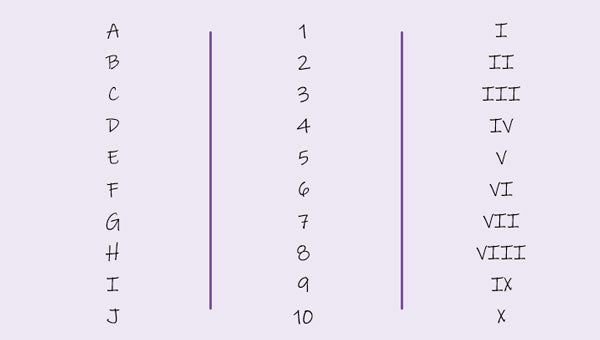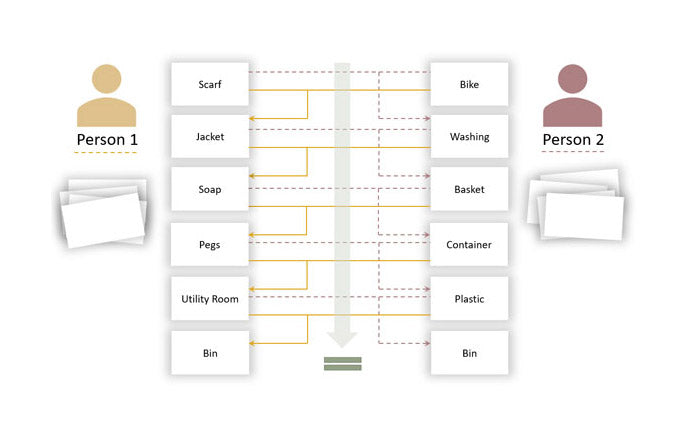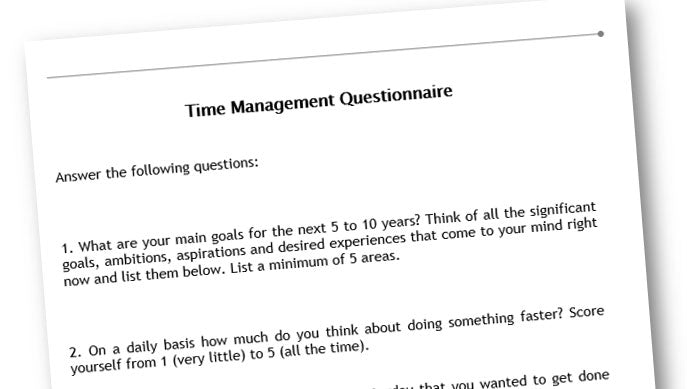Purpose
The digital age has made it possible to multi-task. Multi-tasking increases productivity because you can do more in a given time. But can you? With certain activities, such as driving while listening to an audio book, this is highly productive. With some activities, you may easily end up producing sub-standard quality or finish none at all.
Like everything, if used excessively, it can actually reduce productivity. People who multi-task too much may start to suffer from lack of concentration. For example, you may sit behind a computer and decide to write a report. However, lots of unrelated ideas about you latest emails, browsing, conversations or daily activities can pop up in your mind that constantly slow you down.
It pays to practice concentration, so that when necessary you can focus as if nothing else matters and give a task your 100% effort.
It is famously known that if you want to increase your productivity and quality of your life to 100%, give 100% to every little thing you do. In other words, when you write a report, only think about writing it and when you are on holiday, only think of things you can do to have fun and not about work you left behind, or work that you will have to do when you get back.
This activity contains a series of exercises on increasing concentration. Depending on your course and delegates, you can initiate them during the course or provide them as ideas for post course exercises.
Objective
Follow a series of mental exercises to increase concentration.
Setup
- Explain the following exercises to the delegates. Make sure nothing will interrupt the concentration as they go through the exercise. If you were using a projector, turn it off or blank the screen.
EXERCISE 1:
- Choose a thought. This can be anything.
- Hold on to this thought for 5 minutes.
- You should not let any other thought to creep in. As soon as you feel you are drifting, focus and block out the new thought.
- Options:
- You can make this a daily habit so you can switch to high concentration at will.
- Increase the length to about 10 minutes and focus on a single thought for this amount of time.
EXERCISE 2:
- Lie down and relax all your muscles.
- Think of your heart pumping blood to all of your body. Feel how the blood starts from your heart and goes down all the way to your toes and then comes back up again for the next cycle. Visualise your vein carrying blood to various parts of your body.
- Make sure you stay focused and no other thought drifts in.
EXERCISE 3:
- Place an object in front of you. This can be anything. Examples are scissors, earphones, a biscuit, a pen, a watch, etc.
- Observe the object and look at all the details. Memorise as much details as you can in about 3 minutes.
- When you are ready, put the object away.
- Relax your muscles and then close your eyes.
- Now, imagine the object with as much details as you can.
- Test yourself to see if you were right.
EXERCISE 4:
- Sit in front of a clock which has a second hand (one rotation per minute).
- Concentrate on this hand and think of nothing else as it goes around.
- This rather simple setup can be challenging since after a few seconds everything starts to get repeated again. This is when you are most susceptible to drift. It requires strong will power and determination to stay focused which is the real power of this exercise.
Timing
Explaining the Exercise: 2 minutes.
Activity: 5 to 15 minutes (various)
Group Feedback: 5 minutes.
Discussion
If running the exercises in a class, ask delegates to provide feedback after going through the exercises and reflect on their experience.
Comments
By mina @ Friday, November 12, 2010 9:17 AM
I find the material very useful for my training sessions. Thankyou for sharing!
By Sameer Agashe @ Friday, July 27, 2012 3:06 PM
Soft Skills Training Materials
Get downloadable training materials
Online Train the Trainer Course:
Core Skills
Learn How to Become the Best Trainer in Your Field
All Tags
Training Resources for You

Course Design Strategy
Available as paperback and ebook

Free Training Resources
Download a free comprehensive training package including training guidelines, soft skills training activities, assessment forms and useful training resources that you can use to enhance your courses.

Our Comprehensive Guide to Body Language

Train the Trainer Resources
Get Insights - Read Guides and Books - Attend Courses
Training Materials
Get downloadable training materials on: Management Training, Personal Development, Interpersonal Development, Human Resources, and Sales & Marketing














Leave a comment
All comments are moderated before being published.
This site is protected by hCaptcha and the hCaptcha Privacy Policy and Terms of Service apply.